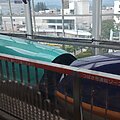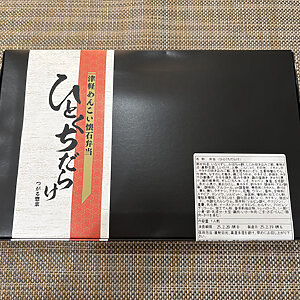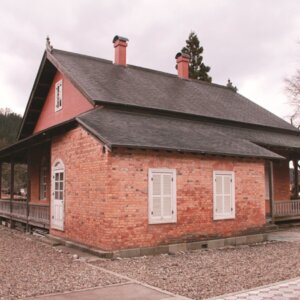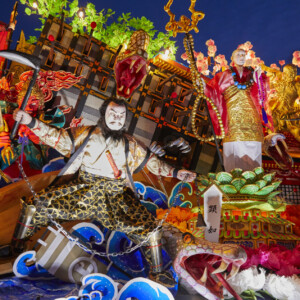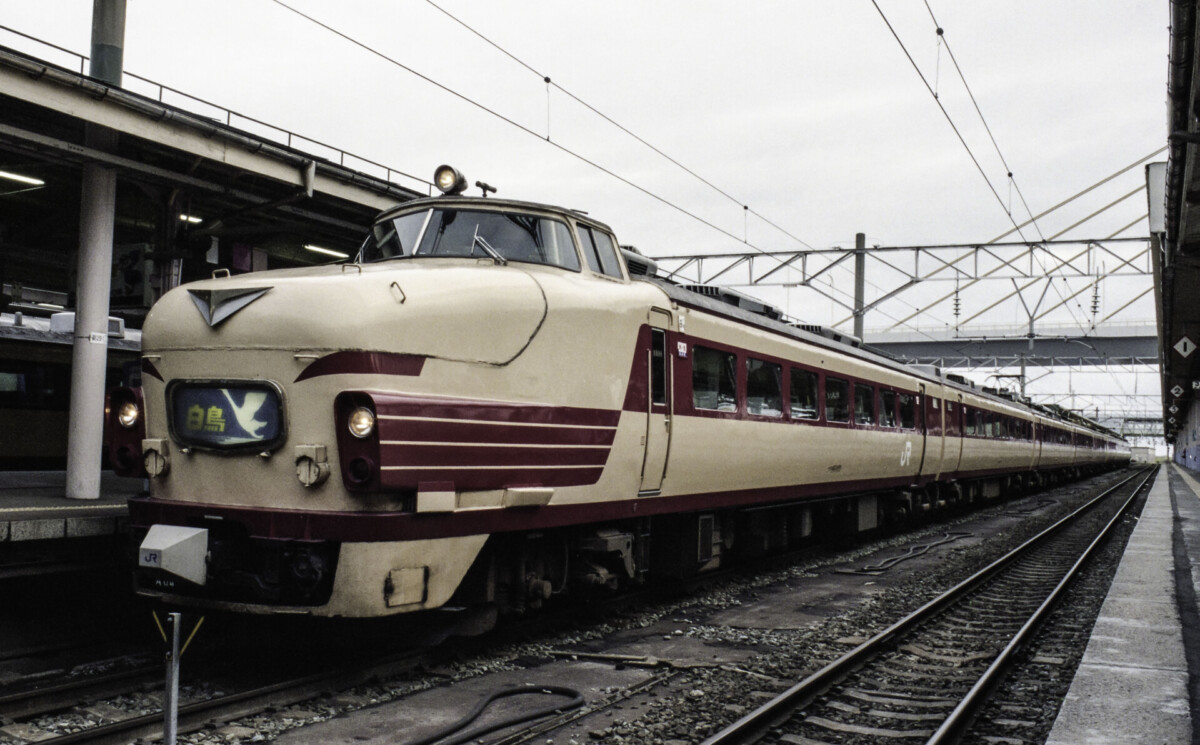
It takes 16 hours to Aomori from Osaka! Shiratori is the longest daytime express train in Japan
table of contents
There used to be a limited express train called
Shiratori operated by Japan National Railways and JR that ran over 1000km along the Sea of Japan coast from Osaka Station to Aomori Station When it first appeared in 1961, it took
15 hours and 45 minutes However, although the Shiratori is a train that runs for a long time, it is not a sleeper express.
It was
a daytime limited express train that you sat on This time we will introduce Shiratori, which ran the longest distance in Japan as a daytime limited express train on conventional lines (other than Shinkansen lines)
Appearance of "Swan"
"limited express" is well-established among people who use railways on a daily basis, but it is originally an abbreviation for
"special express train." In the former Japan National Railways (predecessor of JR), limited express trains were truly special trains that were operated only on limited routes.
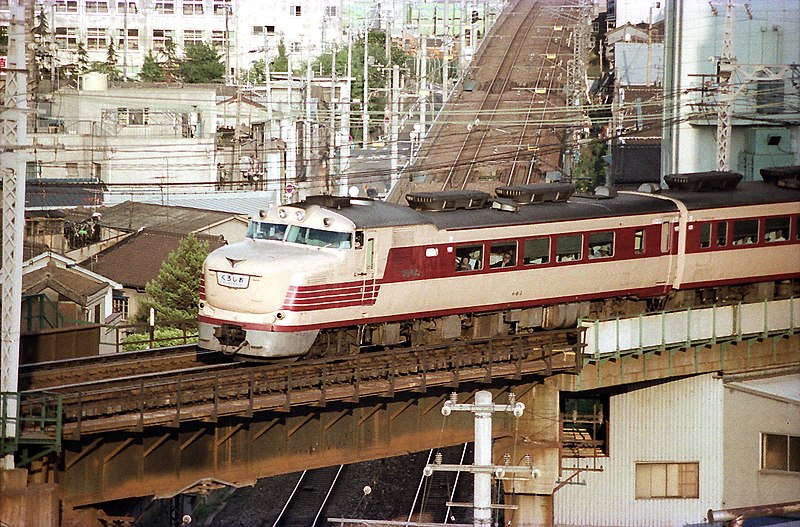
Author: Gohachiyasu1214 – Posted by the author himself, CC Attribution-ShareAlike 4.0,
by https://commons.wikimedia.org/w/index.php?curid=76865625
The situation changed dramatically in 1958.
Hatsukari, has started operating
between Ueno Station in Tokyo and Aomori Station in Aomori Prefecture Hatsukari was originally operated by steam locomotives towing passenger cars, but two years later, in 1960, the service was changed to Kiha 81 series diesel cars .
We have explained about limited express Hatsukari in a previous article, so please take a look.
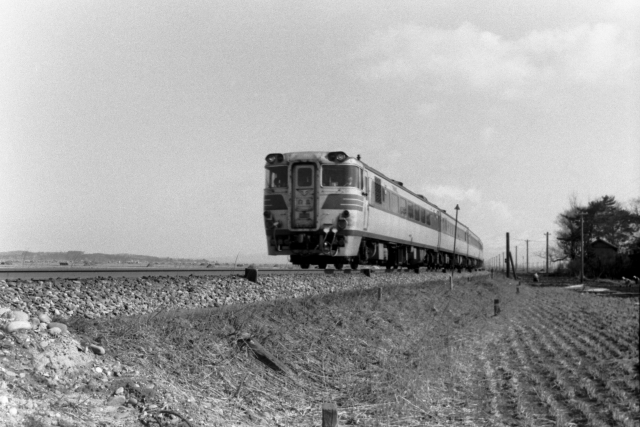
On October 1, 1961, the year after the Kiha 81 series debuted, the Kiha 82 series, , debuted.
The Kiha 82 series became the first limited express train to be operated on many routes where limited express trains had not previously been operated .
One of them was
Swan The origin of the name Shiratori is said to be the swan that flies to Lake Hyoko in Niigata Prefecture.
Nou Riot that occurred at Nou Station in Niigata Prefecture on the first day of Shiratori operation , as it is not an event in the Tohoku region.
"Sea of Japan Swan" and "Shinetsu Swan"
When Shiratori first appeared, there was a 6-car train that ran between Osaka Station and Aomori Station via the Sea of Japan coast (hereinafter referred to as the "Japan Sea Jukan Line"), and a 6-car train that ran between Osaka Station and Ueno Station. It was a train that ran connected from the station to Naoetsu Station in Niigata Prefecture.
In order to distinguish between trains departing from Aomori and trains departing from Ueno, JNR internally called ``Nihonkai Shiratori'' and ``Shin'etsu Shiratori.''
At the time of its release, the Nihonkai Shiratori had a mileage of 1052.9km.
- It is a conventional line train (not a Shinkansen)
- It is a day train (not a night train)
- It is a limited express train (carried by passengers).
Among the trains (daytime limited express trains on conventional lines) that meet all of the above conditions, there is no train in the history of Japanese railways that exceeds Shiratori in terms of mileage .
According to the October 1964 timetable in my possession, the Shiratori departs from Osaka Station at 8:15 a.m. and stops at Kyoto, Maibara, Tsuruga, Fukui, Daishoji, Kanazawa, Takaoka, and Toyama. , arrived at Naoetsu Station at 15:06.
At this point, the Aomori-bound and Ueno-bound trains are separated, and the Aomori-bound train stops at Nagaoka, Niitsu, Tsuruoka, Sakata, Akita, Higashi-Noshiro, Odate, and Hirosaki, and the final stop at Aomori Station is at 11:47 p.m. (The formation bound for Ueno stops at Nagano, Karuizawa, Yokokawa, and Takasaki, and arrives at Ueno Station at 8:20 p.m.)
It is
a long journey of 15 hours and 32 minutes, passing through 2 prefectures and 8 prefectures Osaka, Kyoto, Shiga, Fukui, Ishikawa, Toyama, Niigata, Yamagata, Akita, and Aomori However, although it was a long journey, the night express ``Nihonkai'', which ran the same section, took 22 hours, so it was a revolutionary speed increase at the time.
From Aomori Station, you could also transfer to the Seikan Ferry, which departs at 0:15 a.m., to Hakodate Station in Hokkaido.
It was
a train that connected the Kinki, Hokuriku, and Tohoku regions, and also provided access to Hokkaido As of October 1964, both Nihonkai Shiratori and Shinetsu Shiratori had already been expanded to a 14-car train with seven cars each.
The train to Osaka departed from Aomori Station at 5:20am, waiting for the arrival of the Seikan Ferry, and arrived at Osaka Station at 9:07pm, making the train take 15 hours and 47 minutes.
In Ishikawa Prefecture, trains did not stop at Daishoji Station, but instead stopped at Iburihashi Station.
"Swan" became very popular
The Shiratori, which was the first limited express train on the Nihonkai Jukan Line, seemed to have become very popular, and congestion on the Nihonkai Shiratori, which also provided access to Hokkaido, became increasingly intense.
Therefore, in the October 1965 timetable revision, Shinetsu Shiratori the limited express Hakutaka , and Shiratori was to be operated only between Osaka Station and Aomori Station.
At the same time, the train was changed to stop at Niigata Station, which it had not previously done.
Because the train operated independently, the train formation became longer.
According to the October 1967 timetable, at this time there were 14 cars, four of which were separated at Niigata Station, and a 10-car train was operated between Niigata Station and Aomori Station.
Also, according to the March 1972 timetable, at this time the train formation had been reduced to 13 cars, but instead all trains were now going to Aomori Station.
"Swan" became a limited express train

Author: Gohachiyasu1214 – Author's own work, CC Attribution-ShareAlike 4.0,
by https://commons.wikimedia.org/w/index.php?curid=123866005
As the electrification of the Japan Sea Jukan Line was completed and trains could now be used, in October 1972 the train schedule was revised, and the vehicles used for Shiratori were changed from the Kiha 82 series to the 13-car 485 series trains. it was done.
The 485 series train is a typical limited express train from the JNR era.
The speedup effect of switching to electric trains was significant, and the travel time between Osaka Station and Aomori Station was now 13 hours and 40 minutes.
In March 1975, the route within Shiga Prefecture was shortened by changing to the Kosei Line, which opened on the west side of Lake Biwa.
In November 1982, Shiratori was set up to run once a day between Fukui Station and Aomori Station.
However, unlike the Shiratori that departs from and arrives at Osaka Station, the dining car was not connected.
Then, in November 1984, the dining car disappeared from Shiratori trains departing from and arriving at Osaka Station.
This is despite the fact that the train continues to run for 13 hours.
Furthermore, the Shiratori service departing from and arriving at Fukui Station was abolished due to the timetable revision in March 1985, just two years and four months after its introduction.
The number of trains departing from and arriving at Osaka Station was also reduced by one car, making it a 10-car train at this time, and the following year, in November 1986, the number of trains was reduced by one more, making it a nine-car train.
By this time, it could be said that the swan's glory was already beginning to fade.
"Swan" was abolished at the beginning of the 21st century.
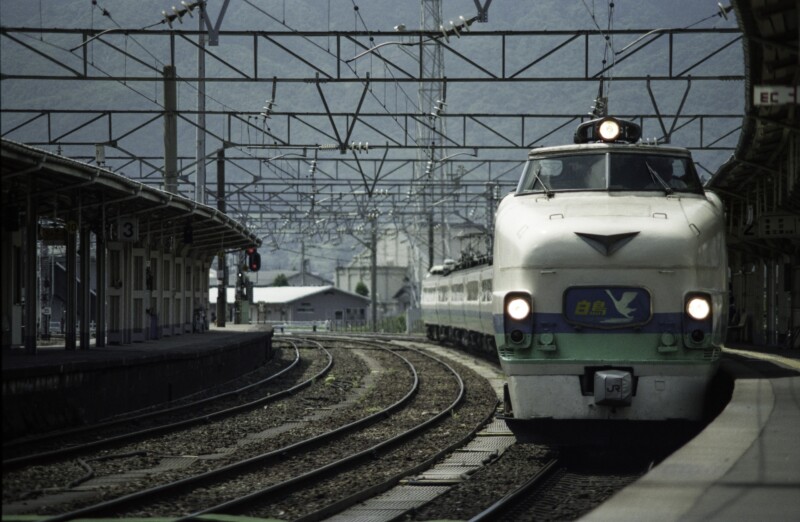
the Swan was introduced in 1961, airfares were very expensive and air travel was not common.
However, the 1980s are no longer such times.
People began to use airplanes to travel between the Kinki region and the Tohoku region or Hokkaido .
In 1987, the Japanese National Railways was split up and privatized into JR companies, and Shiratori became a train that runs across the areas of JR West and JR East.
After privatization, the speed of the train was increased somewhat and the facilities inside the train were improved, but it was not possible to go against the trends of the times, and the number of people using the Shiratori for the entire section from Osaka Station to Aomori Station has decreased. That's what I said.
If there are no more people using the entire section, there is no big problem even if the section where the limited express train is operated is divided in the middle.
Another disadvantage is that trains that run over long distances are more likely to run into problems and be delayed.
Shiratori, which was running between Osaka Station and Aomori Station, was behind
"Raichou" "Hokuetsu" between Kanazawa Station and Niigata Station "Inaho" between Niigata Station and Aomori Station. It was decided to abolish it in the form of entrusting it to. 's final run was on March 2, 2001 , and many people, especially railway fans, were sad to say goodbye to the train, which ended its nearly 40-year mission.
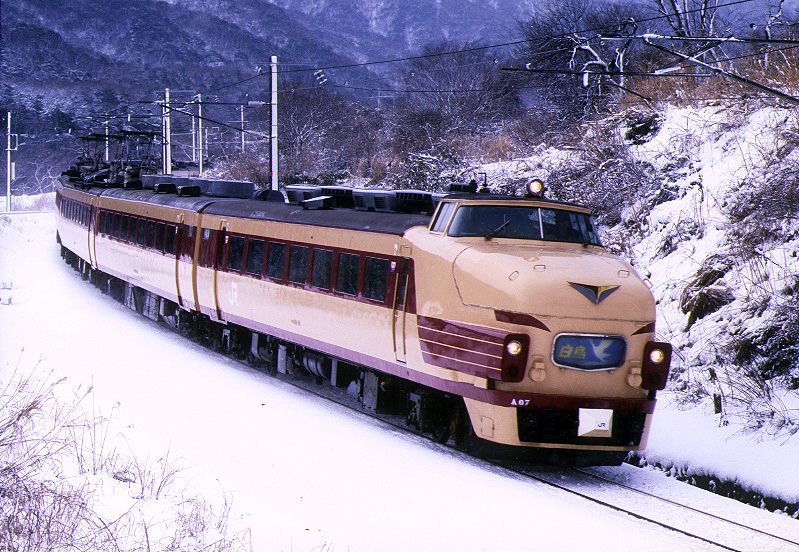
CC Attribution 3.0, https://commons.wikimedia.org/w/index.php?curid=93623482
Once again, Shiratori's operating distance was the longest in Japan as a daytime limited express train on a conventional line.
And it is unlikely that this record will ever be broken .
"Nichirin Seagaia" operated by JR Kyushu .
The route is 413.1 km from Hakata Station to Miyazaki Airport Station via Kokura Station, Oita Station, and Miyazaki Station.
This is not even half as long as the Swan, which covered more than 1000km of track.
The second generation ``Swan'' crossed the Seikan Tunnel.
"Super Shiratori" were given
to the limited express trains that ran from Hachinohe Station and Aomori Station through the Seikan Tunnel to Hakodate Station. . Although the name is the same as the Shiratori train between Osaka Station and Aomori Station, the operating section is completely different (other than stopping at Aomori Station), so I will omit a detailed explanation this time.
This second-generation Shiratori train was also discontinued with the opening of the Hokkaido Shinkansen in March 2016.
in conclusion
Currently, if you use a plane to travel from Osaka Station to Aomori Station, the flight time is about 1.5 hours, and including the travel time to Itami Airport and from Aomori Airport, it takes about 4 hours. You will be able to
arrive If you choose to take the train, you can
get there in about 6 and a half hours It is understandable that there is no longer a demand for trains that take 13 hours to run along the Japan Sea Jukan Line.
However, spending half a day on a train had a kind of romance that modern train travel lacks.
Please remember the Shiratori, which reigned as a famous train on the Sea of Japan Line and had a great influence on the Tohoku region.


